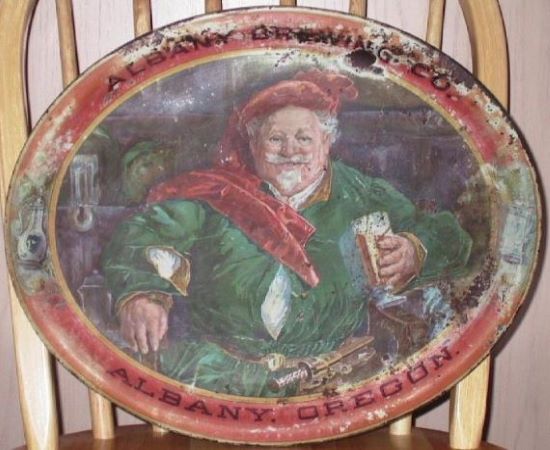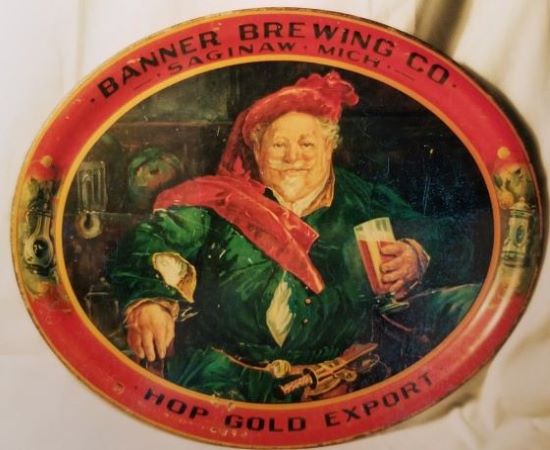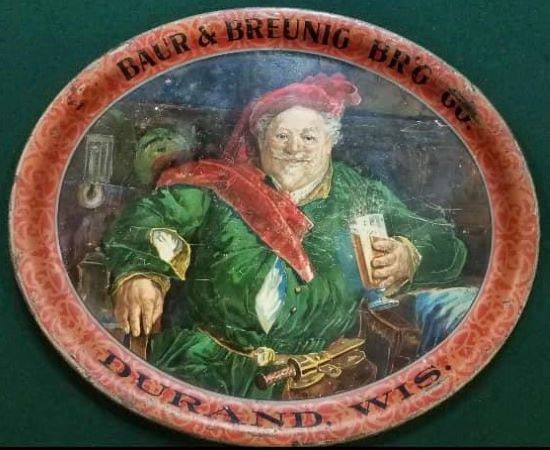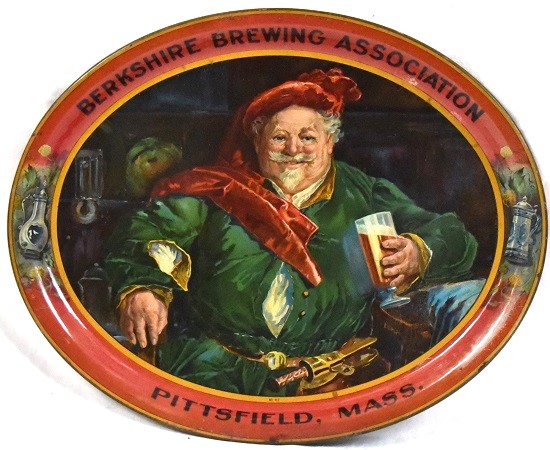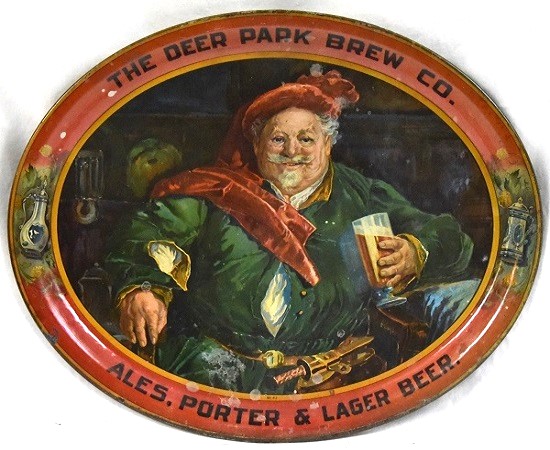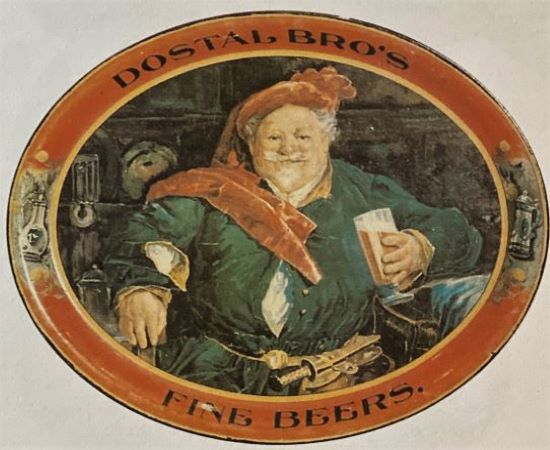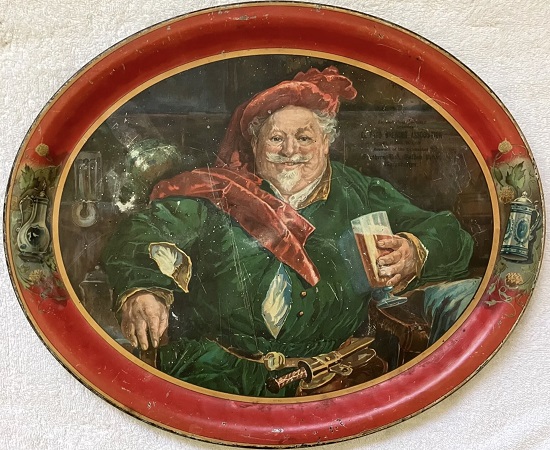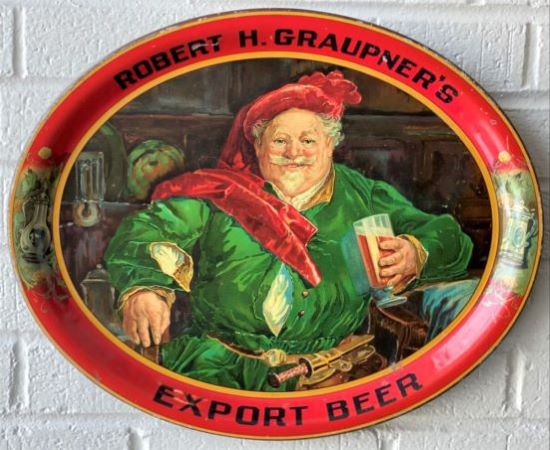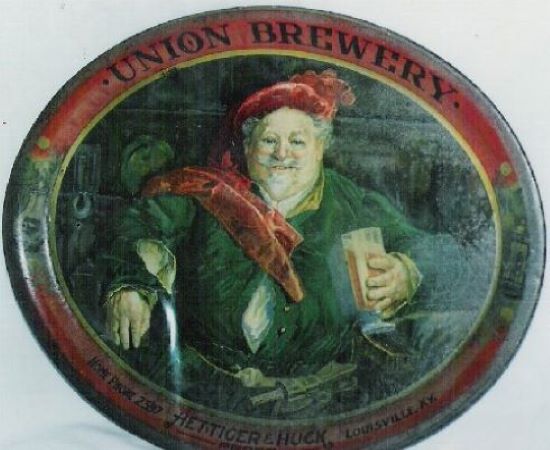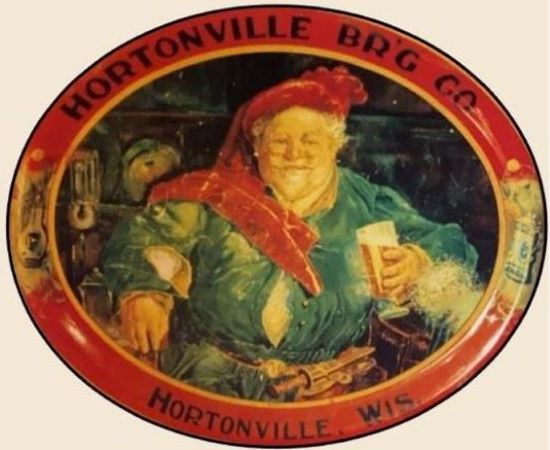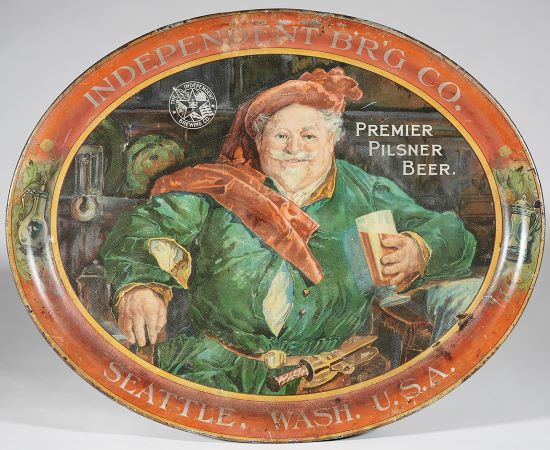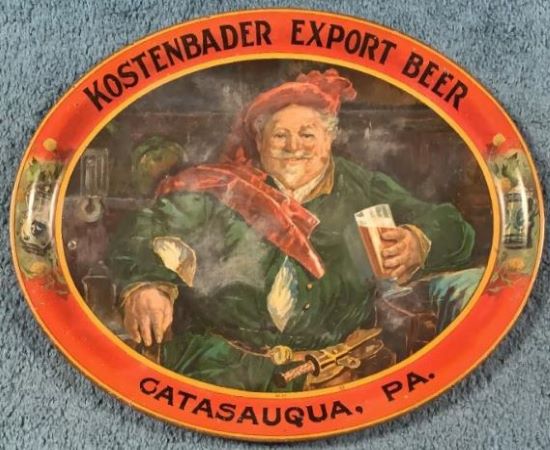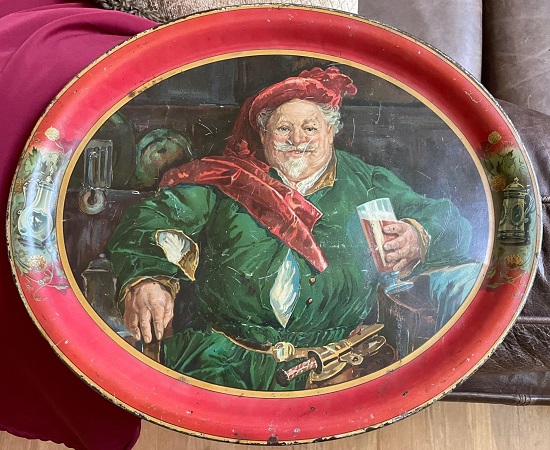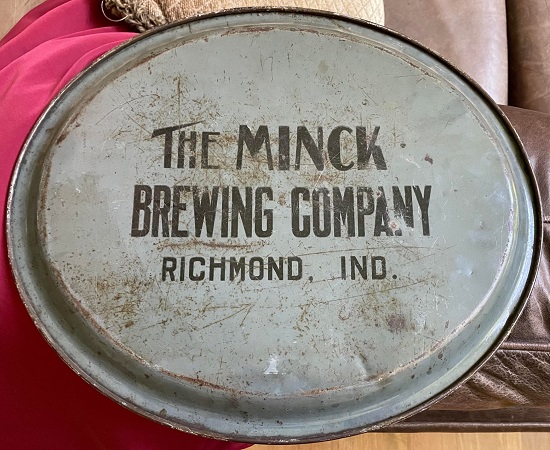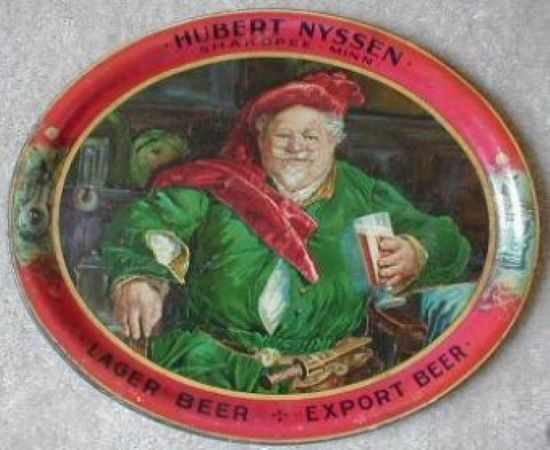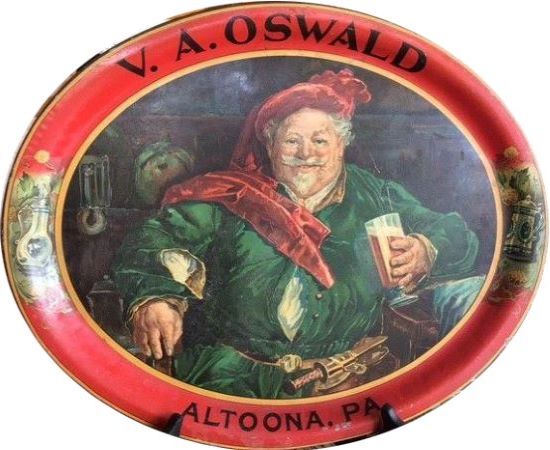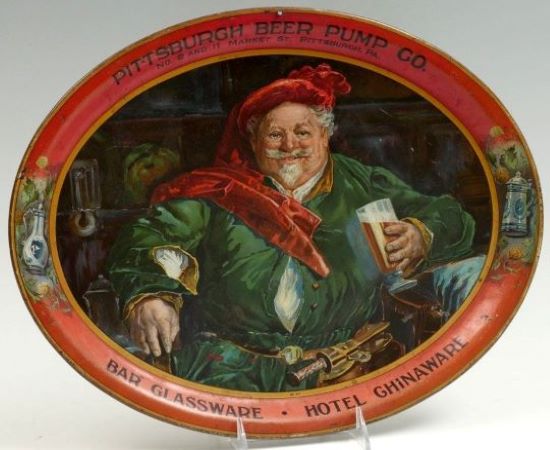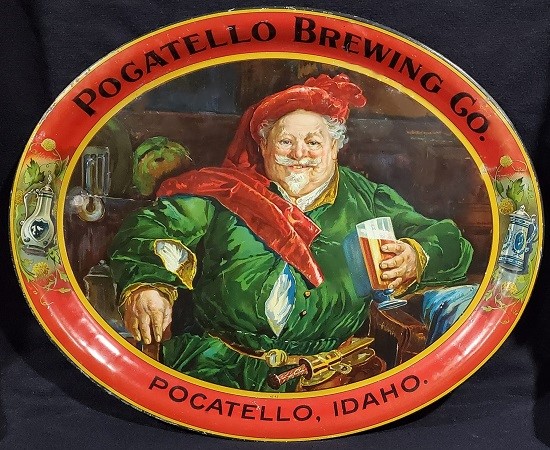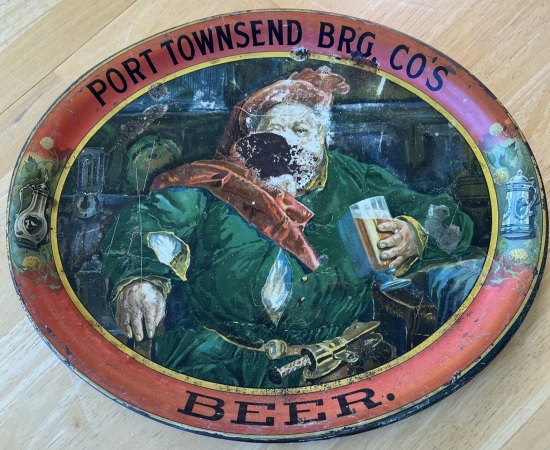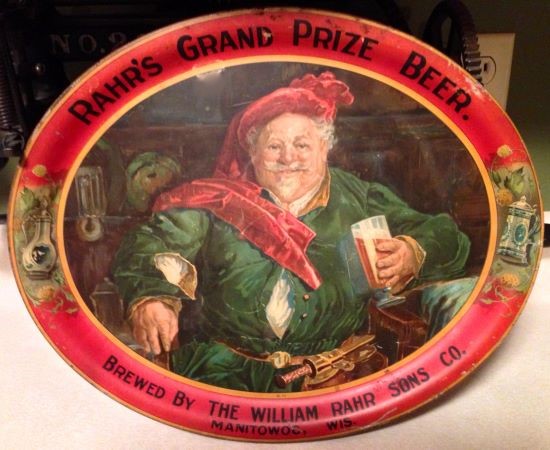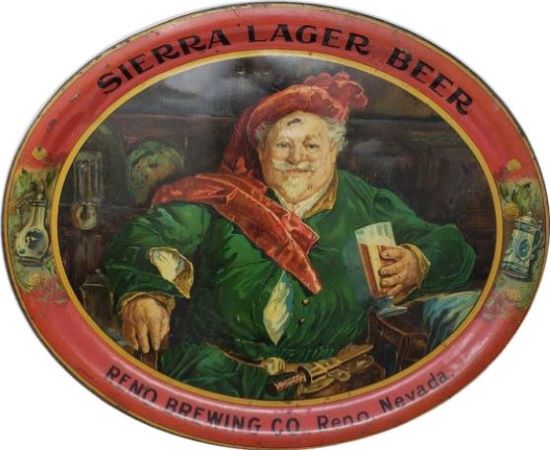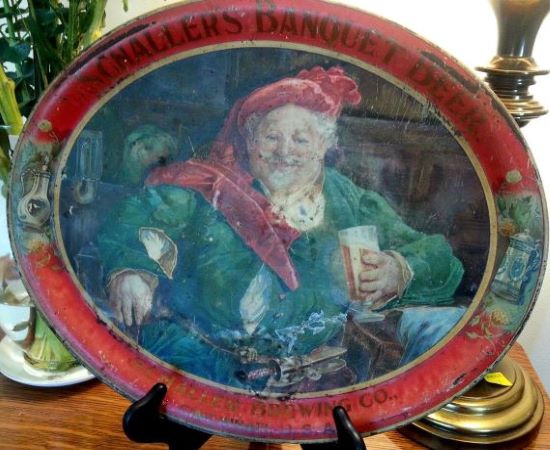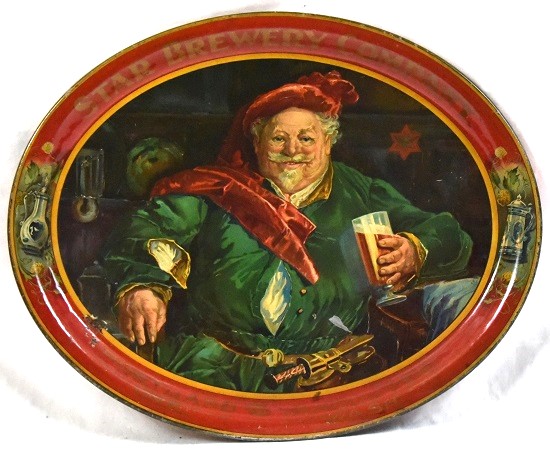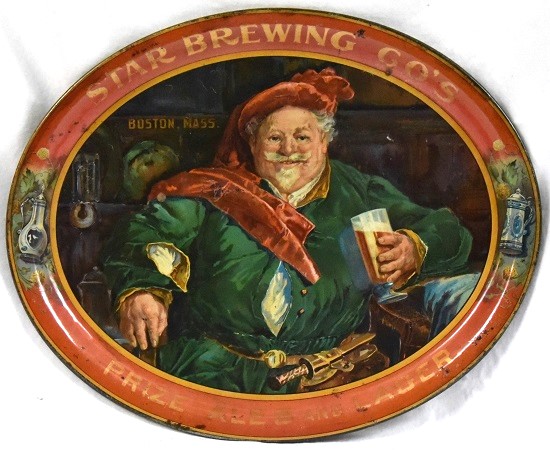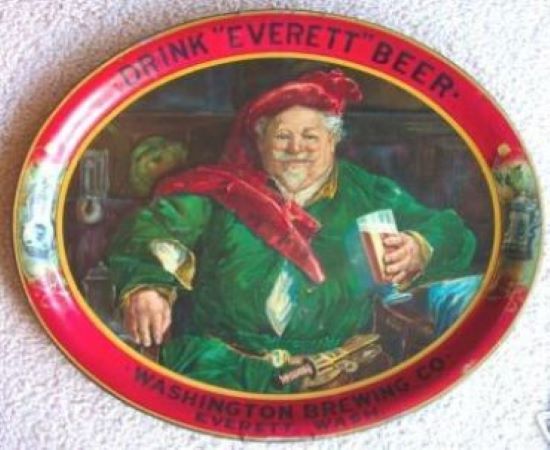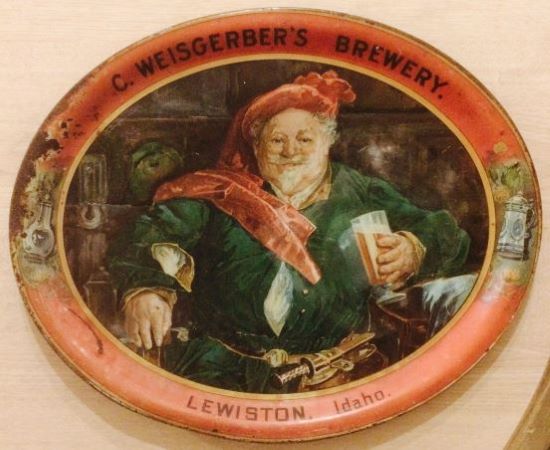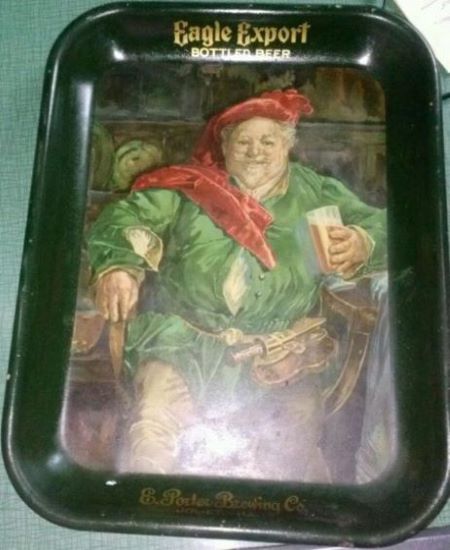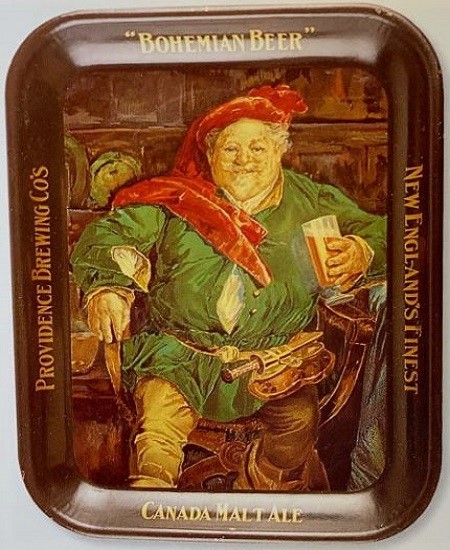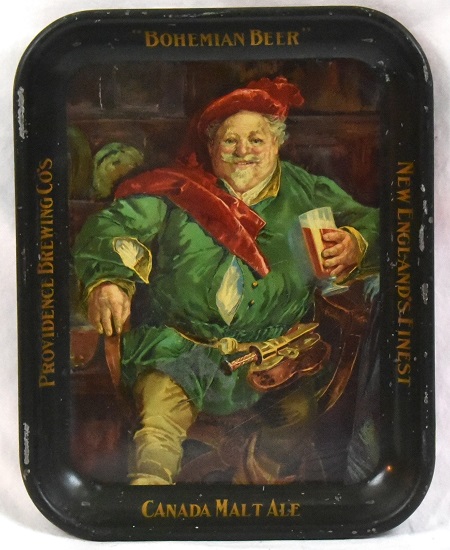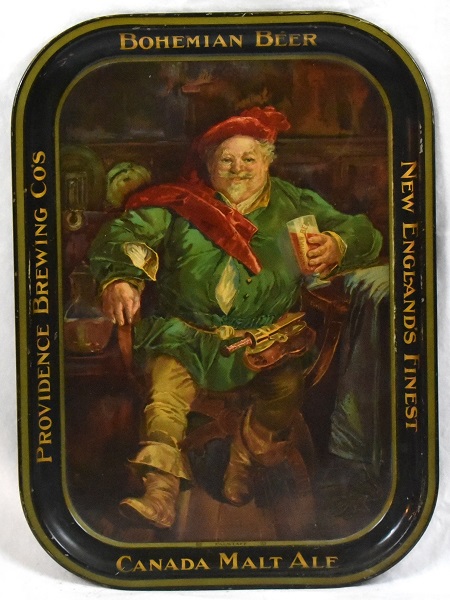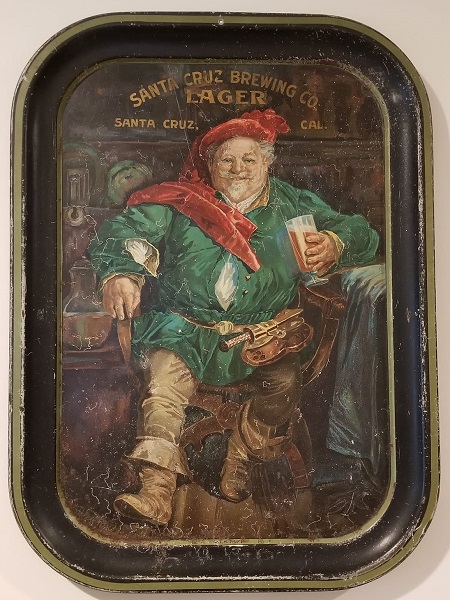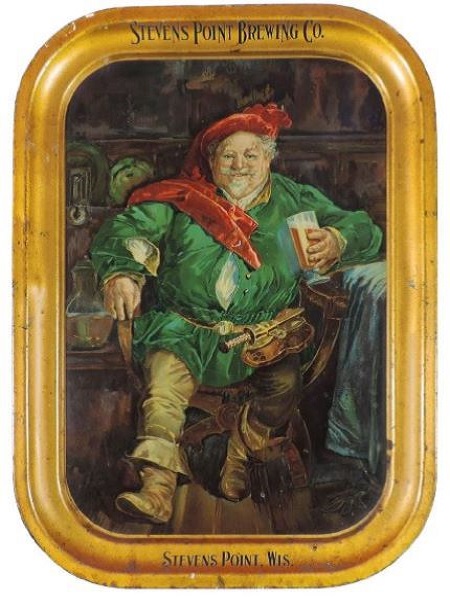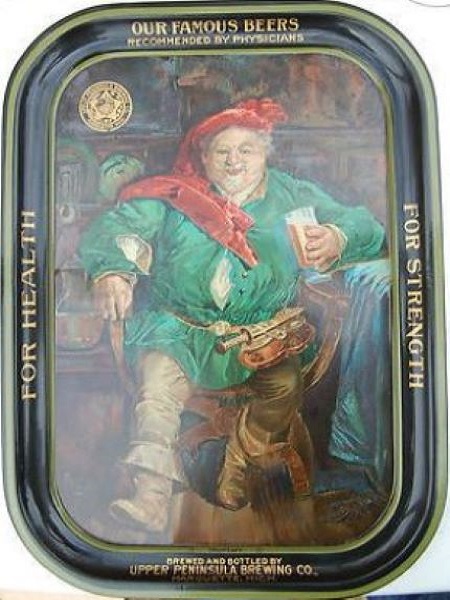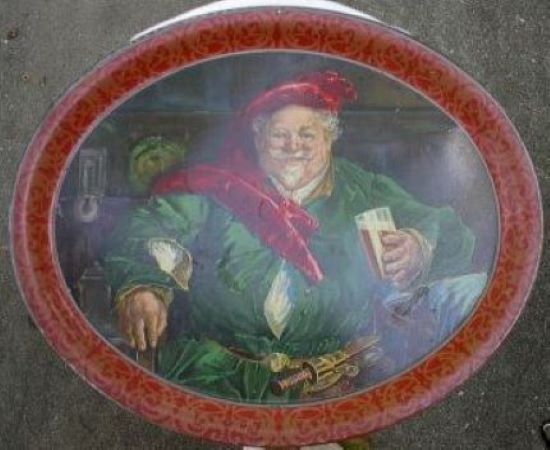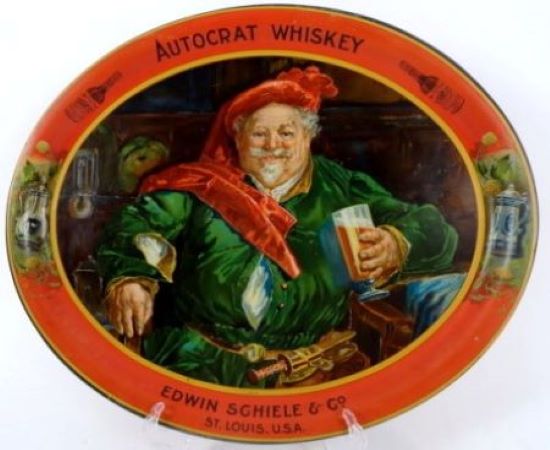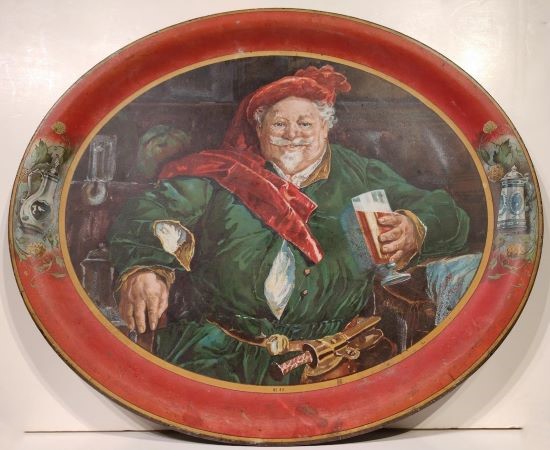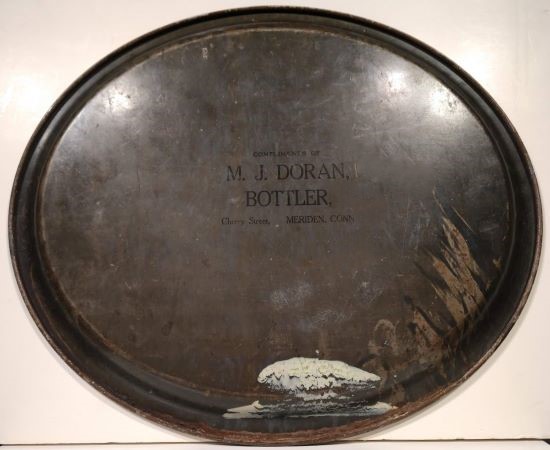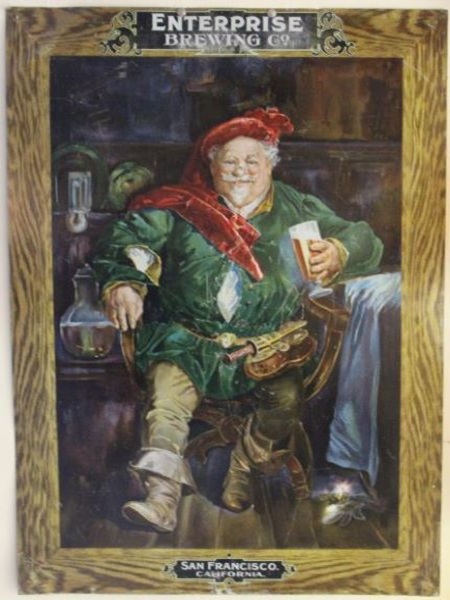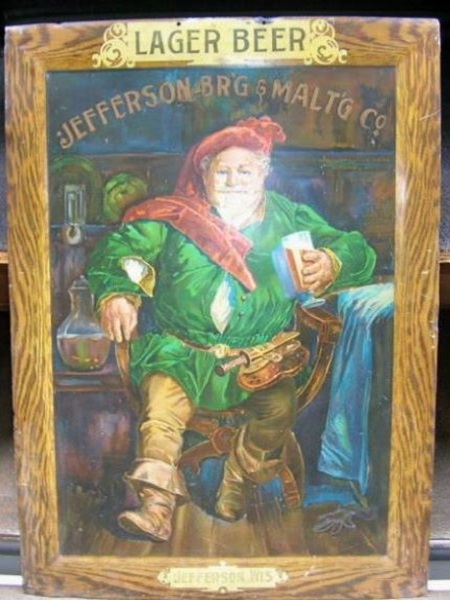The 'Stock' Exchange
Meek & Beach Co. No. 42 "Falstaff"
Meek & Beach Co. No. 42 "Falstaff"
Date: 1903 - 1910
Size: 16.5" x 13.5"
12.25" x 17.25"
Type: Inverted Pie
Size: 10.5" x 13.5"
Type: Pie
Scarcity: Common
Value: $$$ to $$$$$
Condition & Brewer Dependent
Size: 16.5" x 13.5"
12.25" x 17.25"
Type: Inverted Pie
Size: 10.5" x 13.5"
Type: Pie
Scarcity: Common
Value: $$$ to $$$$$
Condition & Brewer Dependent
Rectangular Versions
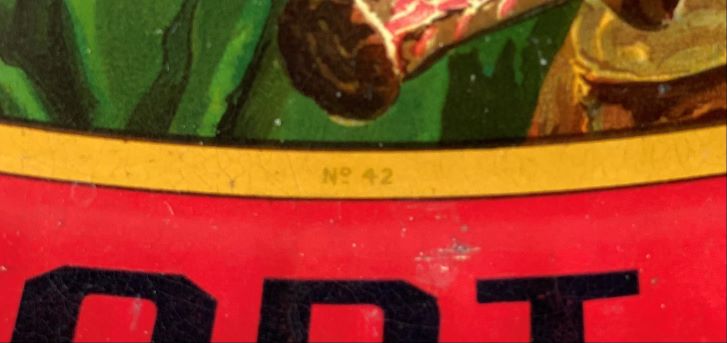


General
Maybe the most famous partier in western literature, Falstaff shows up as character in a number of stock and non-stock trays by a number of different manufacturers over the years, including post-pro (Falstaff Brewing most immediately comes to mind). Sir John is best known from Shakespeare’s plays (Henry IV Part 1 & 2, as well as Merry Wives of Windsor) where he is portrayed as a fat, vain, over-the-hill braggart and lout who spends most of his time drinking at the Boar’s Head Inn (a real place in London during the time) and hanging out with petty criminals and lowlifes. He’s more of a buffoon (and butt of the joke) in Merry Wives of Windsor. There is a whole branch of Shakespearian scholarship regarding the character’s derivation from actual historical figures. The Falstaff character also appears in other literary works, as well as operas and movies (eg, Orson Well's Chimes at Midnight). This stock version is, not surprising, the most common pre-pro tray rendition of Falstaff.
This is the last tray that appears in any of the catalogues we have in our possession (M&B No. 16, 1903) where it is described as “Tea Tray No. 42 Especially designed and particularly well adapted to a bachelor’s room, cozy corner in the library, or to use in club and lodge halls.” It is also the last entry in the 1903 M&B price list where it is listed as “No. 41, Falstaff.”
Shape & Rim & Ad Text
The most common size/shape of this design that we have seen are oval trays with the low pie shaped rim and rolled edge. Almost all of them have a solid red rim with two small “window” panels on the rim at 3 and 9 o’clock—some sort of decanter on the left and a stein on the right. These appear without the hard border of “windows” on early Tuscarora and Beach trays. The Falstaff character appears in a landscape orientation which was unusual for early Tuscarora/M&B stock trays (only No. 14 and No. 38 are similarly landscape oriented). Perhaps this is a subtle fat joke—that he’d only fit in the frame that way. Advertising text on oval trays usually appears in black on the rim, although a few exceptions exist, such as one from Enterprise Brewing of San Francisco which has silver text on the rim (similar to what they did on their version of No. 31). Interestingly, Enterprise is also one of the few that put out a tin-over-cardboard (TOC) sign version—the only TOC example we’ve seen. Both Jefferson and Upper Peninsula put out SFT sign versions.
Interestingly, there are also rectangular versions (oblongs) in both large (12.25” x 17.25”) size and small (10.5" x 13"). The larger size features Falstaff from head to toe (seated) and uses the typical oblong style of early Tuscarora and M&B—low, flat trays with broad edges. However, the examples we are aware of have single color (black or gold) rims unlike early oblongs with black or gold text.
The smaller rectangular version, of which we’ve only seen a couple of examples, is a size/shape that doesn’t show up in until roughly 1910 when it became a popular size. These also have single color rims with gold advertising text. We speculate that this design was either in the catalogue for a long time or was a design that was “brought out of retirement.” J.F. Meek, in an interview with Printer’s Ink, stated that “We have made it one of our cardinal rules that a traveling man (meaning an M&B salesman) shall never go over old territory without something brand new and striking. There is nothing that will kill off business so quickly as showing the trade the same old things time and time again…” This is the first design we are aware of that was issued in multiple different tray size/shapes. Providence Brewing is the first example (there are others later in the catalogue) to produce two different tray sizes with the same design (they issued both a large and a small oblong version). We have seen unmarked stock samples in both the oval and large oblong sizes, but never the smaller oblong size.
Hager & Price
This image is not mentioned in Hager, but is included in his catalog of pictures. Not surprisingly the vast majority of examples are from different brewery issuers, although there are a few non-brewers mixed in too. Prices for brewery example versions tend to reflect the desirability of the brewery in question and cover a wide range, although they tend (with certain exceptions) to be more reasonable than for other stock designs from this timeframe. For non-brewers, prices tend to slightly higher than contemporary stock designs.
Maybe the most famous partier in western literature, Falstaff shows up as character in a number of stock and non-stock trays by a number of different manufacturers over the years, including post-pro (Falstaff Brewing most immediately comes to mind). Sir John is best known from Shakespeare’s plays (Henry IV Part 1 & 2, as well as Merry Wives of Windsor) where he is portrayed as a fat, vain, over-the-hill braggart and lout who spends most of his time drinking at the Boar’s Head Inn (a real place in London during the time) and hanging out with petty criminals and lowlifes. He’s more of a buffoon (and butt of the joke) in Merry Wives of Windsor. There is a whole branch of Shakespearian scholarship regarding the character’s derivation from actual historical figures. The Falstaff character also appears in other literary works, as well as operas and movies (eg, Orson Well's Chimes at Midnight). This stock version is, not surprising, the most common pre-pro tray rendition of Falstaff.
This is the last tray that appears in any of the catalogues we have in our possession (M&B No. 16, 1903) where it is described as “Tea Tray No. 42 Especially designed and particularly well adapted to a bachelor’s room, cozy corner in the library, or to use in club and lodge halls.” It is also the last entry in the 1903 M&B price list where it is listed as “No. 41, Falstaff.”
Shape & Rim & Ad Text
The most common size/shape of this design that we have seen are oval trays with the low pie shaped rim and rolled edge. Almost all of them have a solid red rim with two small “window” panels on the rim at 3 and 9 o’clock—some sort of decanter on the left and a stein on the right. These appear without the hard border of “windows” on early Tuscarora and Beach trays. The Falstaff character appears in a landscape orientation which was unusual for early Tuscarora/M&B stock trays (only No. 14 and No. 38 are similarly landscape oriented). Perhaps this is a subtle fat joke—that he’d only fit in the frame that way. Advertising text on oval trays usually appears in black on the rim, although a few exceptions exist, such as one from Enterprise Brewing of San Francisco which has silver text on the rim (similar to what they did on their version of No. 31). Interestingly, Enterprise is also one of the few that put out a tin-over-cardboard (TOC) sign version—the only TOC example we’ve seen. Both Jefferson and Upper Peninsula put out SFT sign versions.
Interestingly, there are also rectangular versions (oblongs) in both large (12.25” x 17.25”) size and small (10.5" x 13"). The larger size features Falstaff from head to toe (seated) and uses the typical oblong style of early Tuscarora and M&B—low, flat trays with broad edges. However, the examples we are aware of have single color (black or gold) rims unlike early oblongs with black or gold text.
The smaller rectangular version, of which we’ve only seen a couple of examples, is a size/shape that doesn’t show up in until roughly 1910 when it became a popular size. These also have single color rims with gold advertising text. We speculate that this design was either in the catalogue for a long time or was a design that was “brought out of retirement.” J.F. Meek, in an interview with Printer’s Ink, stated that “We have made it one of our cardinal rules that a traveling man (meaning an M&B salesman) shall never go over old territory without something brand new and striking. There is nothing that will kill off business so quickly as showing the trade the same old things time and time again…” This is the first design we are aware of that was issued in multiple different tray size/shapes. Providence Brewing is the first example (there are others later in the catalogue) to produce two different tray sizes with the same design (they issued both a large and a small oblong version). We have seen unmarked stock samples in both the oval and large oblong sizes, but never the smaller oblong size.
Hager & Price
This image is not mentioned in Hager, but is included in his catalog of pictures. Not surprisingly the vast majority of examples are from different brewery issuers, although there are a few non-brewers mixed in too. Prices for brewery example versions tend to reflect the desirability of the brewery in question and cover a wide range, although they tend (with certain exceptions) to be more reasonable than for other stock designs from this timeframe. For non-brewers, prices tend to slightly higher than contemporary stock designs.
Confirmed Brewer used Stock Trays - Oval Version
Non-Beer Related & Non-Tray Uses
Click the Picture to Return to Meek & Beach Stock Catalog Page
